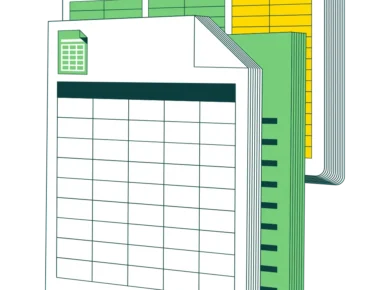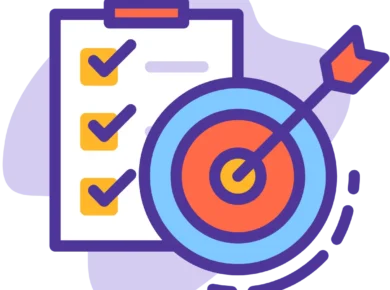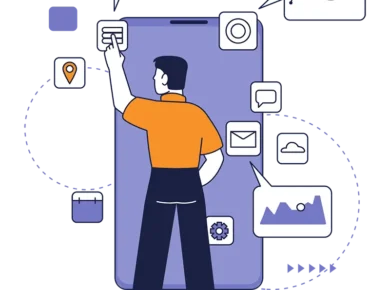When you’re a freelancer, your work is your signature, and your projects can comprise a persuasive showcase of your capabilities. But what separates a successful project from a floundering one? Often, the not-so-secret ingredient is the clarity of your project scope and the precision of your deliverables.
In this guide, we will discuss the importance of defining these crucial project elements and how to do so effectively to enhance client satisfaction and your overall success in the gig economy.
Establishing the Core of Your Freelance Projects
Imagine starting a puzzle without knowing the final picture or the pieces you have to work with. That’s the reality many freelancers face when they begin projects with unclear scopes.
The project scope is the foundation upon which you build your entire workflow. It is the detailed outline that captures what is to be delivered, the boundaries of the project, and the duties and responsibilities of each party.
Deliverables, often considered milestones, are the tangible items or services produced as a result of the project.
Without these two, you’re walking a tightrope without a safety net, setting yourself up for misunderstandings and, potentially, a compromised final product.
Benefits of a Well-Defined Project Scope and Deliverables
When you clearly define your project scope and deliverables, you set the stage for a successful freelance assignment by providing a structured blueprint that guides you through all phases of your project from start to completion.
Let’s see how establishing a clear project scope and deliverables benefits you:
Enhanced Clarity and Focus
You gain clarity on the project’s objectives, which helps you understand the goals and prioritize your tasks effectively. This focus directs your efforts toward what is essential, allowing you to allocate your time and resources efficiently. With well-defined deliverables, you and your client have a mutual understanding of the desired outcome.
Improved Time and Resource Management
A clear project scope prevents you from committing beyond what was agreed upon, which is crucial for accurately estimating the time and resources needed. This ensures that you can deliver quality work within the expected timeline. Clear deliverables allow for strategic resource allocation planning, thereby maximizing productivity without resource depletion.
Enhanced Client Relationships
Establishing realistic expectations with your client from the beginning fosters trust and helps avoid misunderstandings. This transparency in what to expect, and when to expect it, helps maintain a smooth workflow and client satisfaction. The defined project scope is a reference for all communications, reducing conflicts and ensuring smoother interactions with regular updates that keep the client informed about progress and any issues.
Prevention of Scope Creep
Defining what the project includes and excludes helps protect against scope creep—the project’s expansion beyond its original objectives. This is vital for maintaining both project profitability and the timeline. When changes are requested, you can quickly negotiate additional charges or time extensions based on the original scope, thereby making revisions straightforward and preventing disputes.
Increased Project Success Rate
The predictability of outcomes when deliverables and scopes are clear leads to higher client satisfaction, which enhances your credibility and the likelihood of repeat business. Also, identifying potential risks early in the project allows you to develop mitigation strategies, prevent major obstacles, and keep the work on track.
Boosted Professional Growth and Development
Delivering projects per a well-defined scope and set of deliverables can significantly enhance your professional reputation, thereby showing your reliability. This reputation makes you a preferred choice for clients, leading to more significant and higher-paying projects. Additionally, the skills required in defining scopes and deliverables—such as negotiation, communication, and strategic planning—are invaluable, enhancing your professional capabilities across all areas of freelancing.
Crafting a Project Scope
Creating a robust project scope is an art; it requires an eye for detail and the subtlety to read between the lines of what your client is asking. Here are the essential steps to crafting an airtight project scope:
Identifying Project Needs and Goals
Before pitching a project, you should ensure you thoroughly understand your client’s needs.
This requires careful listening and the ability to ask probing questions. What pain points does the project need to address? What constitutes success in your client’s eyes?
Also, consider the fact that clients might not fully understand their own needs. It’s your responsibility as a professional to guide them to the best solution using your expertise.
Detailing the Scope
Once you have collected all the relevant information, the next step is to define the project scope. This document should specify the services or products to be delivered, detailed milestones for each phase, the delivery timeline, and the success criteria. Additionally, the scope should contain a communication plan outlining how and when you will communicate with the client, including the methods and frequency of updates and the presentation format for each completed phase. You must be as clear and precise as possible to prevent misunderstandings later on.
Setting Clear Deliverables
Each project will have a set of deliverables, which you must clearly define. What are you providing to the client? When will they receive it? What are the components of that deliverable? Answering these questions creates transparency and accountability.
Communicating the Scope
The final yet often overlooked step in defining the project scope is communicating it to your client. Both written communication and verbal communication are crucial in this phase. A comprehensive scope document is invaluable but equally important is a kickoff meeting that ensures you and your client are fully aligned and understand the expectations.
Related article
How to Prepare a Clear Project Scope and Deliverables
Discover essential tips on defining project scope and deliverables, ensuring clear communication, and preventing scope creep for project success and client satisfaction.
Sample project scope and deliverables
Website Development for a Local Bakery
Project Overview:
This project involves developing a comprehensive website for Sweet Treats Bakery, a local bakery specializing in artisanal baked goods. The website will provide the bakery with an online presence and include the following features:
- A product gallery
- An e-commerce platform for online orders
- A blog for baking tips and recipes
Project Scope:
Objective:
To create a dynamic and user-friendly website for Sweet Treats Bakery that enhances its online visibility, facilitates e-commerce transactions, and engages users with valuable content.
Services and Products to Be Delivered:
- Website Design:
- Custom design that reflects the bakery’s brand, including color scheme, layout, and user interface.
- Responsive design compatible with all devices (desktop, tablet, and mobile).
- Content Development:
- Creation of the content pages ‘About Us,’ ‘Menu,’ ‘Blog,’ and ‘Contact Us.’
- High-quality images of the bakery’s products and store.
- SEO-optimized content to improve search engine rankings.
- E-Commerce Platform:
- Development of a shopping cart and checkout system.
- Integration of a payment gateway for processing transactions (Visa, MasterCard, PayPal).
- User account creation and login capabilities.
- Blog Setup:
- Implementation of a blog for posting recipes and baking tips.
- Features to include commenting, sharing, and social media integration.
Milestones for Each Phase of the Project:
- Phase 1: Planning and Design (Weeks 1-2)
- Gather requirements from the client.
- Create initial design mockups.
- Obtain client review and approval of design.
- Phase 2: Content Development (Weeks 3-4)
- Develop and refine website content.
- Source and edit images.
- Obtain client review and feedback on content.
- Phase 3: Website Development (Weeks 5-8)
- Engage in front-end and back-end development of the website.
- Set up e-commerce functionality and blog.
- Engage in initial testing and debugging.
- Phase 4: Launch and Optimization (Week 9)
- Finalize testing and make adjustments based on feedback.
- Launch the website.
- Monitor and optimize the site for performance issues.
Delivery Timeline:
- The project will commence on May 1, 2024 and is scheduled for completion by July 10, 2024.
Success Criteria:
- Delivery of a fully functional website that meets the design and functionality specifications outlined by the client.
- Achievement of user-friendly navigation and responsive design standards.
- Successful integration of e-commerce and blog features without technical issues.
Communication Plan:
- Channels and Frequency of Communication:
- Weekly progress meetings each Friday with the client via Zoom to review the project’s progress and discuss the next steps.
- Email updates every Tuesday with details on completed and upcoming tasks.
- Presentation of Completed Phases:
- Website features and functionalities will be demonstrated at the end of each phase during the weekly meetings.
- The client will receive access to a staging site to review and provide feedback throughout the development process.
Terms and Conditions:
- Revisions to the scope or additional features requested beyond the agreed deliverables will be subject to renegotiation of time and costs.
- The client will provide all necessary content (text and specific images) by the end of Phase 1.
- Final payment will be due upon completion and satisfactory delivery of the project as per the success criteria.
Tools and Resources for Crafting Your Project Scope
When you are crafting your project scope, the proper tools can streamline the process and enhance the precision of the document you produce. Project management software like Asana, Trello, and Monday.com offers robust features that help you outline tasks, set deadlines, and track progress, thereby ensuring all aspects of the scope are detailed and adhered to.
For creating documents, Google Docs and Microsoft Word are flexible and accessible platforms for drafting scopes that can easily be shared and edited collaboratively.
Additionally, templates can be a huge time-saver; platforms such as Smartsheet and TemplateLab offer pre-made project scope templates that you can customize to fit your needs. Often, these templates include essential elements such as goals, deliverables, tasks, and timelines, which you can adapt to ensure comprehensive coverage of your project’s requirements.
Furthermore, incorporating visual aids like Gantt charts and flowcharts with tools like Microsoft Visio and Lucidchart can help you and your client visualize the project timeline and dependencies more effectively.
Collectively, these tools not only help create a meticulous project scope but also enhance communication and understanding between all stakeholders.
Conclusion
Crafting a clear project scope and defining deliverables is not just a way to spell out what you’re doing; it’s an opportunity to shine as a professional. It sets the stage for a successful collaboration that hinges on clear expectations and tangible results. In an environment where your reputation can make or break your career, a well-constructed scope is more than a formality; it’s a powerful statement of your commitment to excellence.







